Even the newest homes can feel stuck in the past if they’re filled with dated design choices. From mismatched finishes to tired color palettes, certain features instantly age a space—no matter how recently it was built. Whether you’re renovating, buying, or decorating, knowing what to avoid is key to keeping your home looking fresh and current. Here are 12 features that can make any house look outdated, no matter how new they might be.
1. Open Floor Plans

For decades, open floor plans have been praised for creating a sense of spaciousness and flow, but they are quickly becoming less desirable, says Martha Stewart. The pandemic forced many families to work and study from home, highlighting the drawbacks of large, open spaces with little privacy. Noise travels easily in these layouts, making it difficult to focus on work, take phone calls, or enjoy personal time. Additionally, open-concept homes often lack defined spaces, which can make decorating more challenging and lead to a cluttered look.
Designers are now seeing a resurgence of enclosed rooms that provide privacy and functionality. Homeowners are opting for semi-open layouts with pocket doors, partitions, or glass walls that offer flexibility without completely closing off spaces. Separate dining rooms, home offices, and cozy sitting areas are making a comeback as people prioritize comfort and quiet. While open floor plans won’t disappear entirely, the trend of completely open living spaces will continue to fade in favor of more structured layouts.
2. Barn Doors
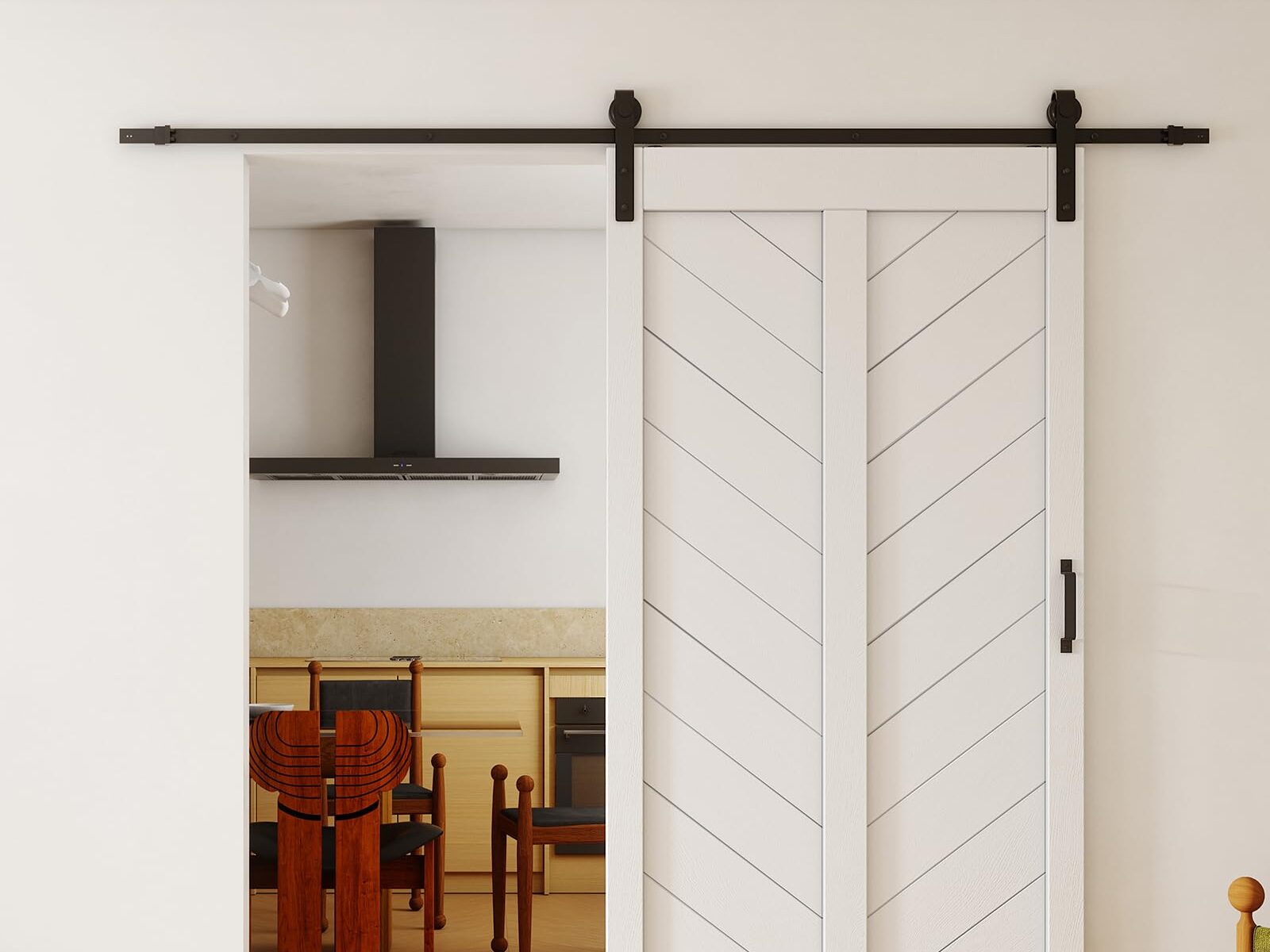
Sliding barn doors became a staple of the farmhouse aesthetic, but their overuse has made them feel more like a passing fad than a lasting design choice. While they are functional in certain spaces, they don’t provide as much sound insulation or privacy as traditional doors, notes Apartment Therapy. Additionally, the rustic, reclaimed wood look of barn doors doesn’t blend well with many modern or transitional interiors. As home design moves toward more refined aesthetics, sleek pocket doors and custom-built interior doors are replacing barn-style options.
If you love the idea of a statement door, consider alternatives such as steel-framed glass doors, minimalist wood panel doors, or custom-built sliding doors that fit your home’s overall design. These options provide the same space-saving benefits as barn doors but with a more timeless and versatile appeal. As interior styles become more polished and sophisticated, the barn door trend will continue to fade from mainstream home design.
3. Wall-to-Wall Carpeting
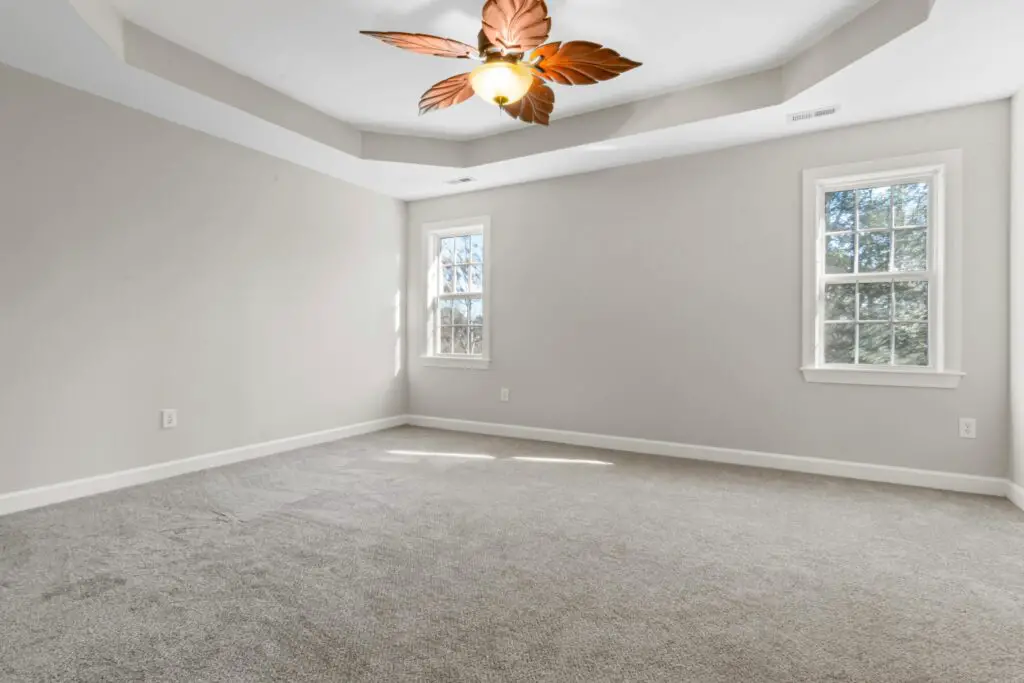
While once a standard in homes, wall-to-wall carpeting is becoming increasingly outdated as homeowners prioritize easy-to-clean flooring options. Carpet can trap dust, allergens, and odors, making it less practical for modern lifestyles. Additionally, high-traffic areas show wear and tear quickly, leading to frequent replacements, says House Digest. With the rise of hardwood, luxury vinyl plank, and tile flooring, carpet is losing its appeal as the primary flooring choice.
Many homeowners now prefer area rugs over full-room carpeting, allowing for flexibility and easier maintenance. If carpet is still desired, designers recommend neutral, low-pile options that complement modern home aesthetics. Wall-to-wall carpeting will continue to decline in popularity, especially in main living areas. Hardwood and eco-friendly alternatives will dominate flooring choices, offering durability and timeless appeal.
4. All-White Kitchens
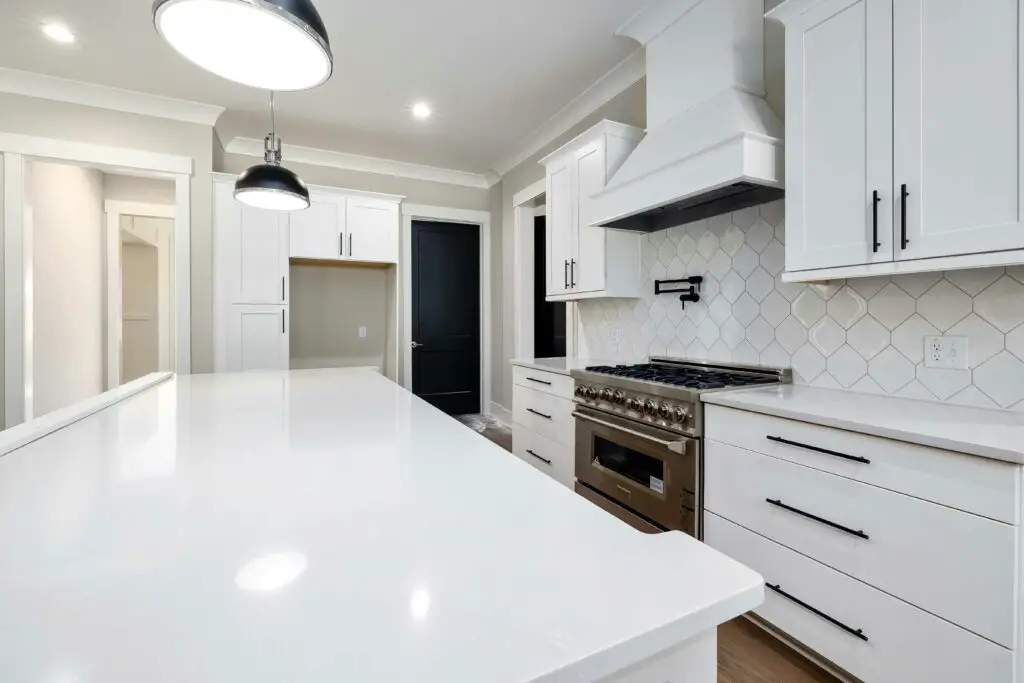
For years, all-white kitchens have been the epitome of modern minimalism, but this trend is quickly losing its appeal. White cabinets, countertops, and backsplashes create a sleek, clean look, but they also show every stain, scratch, and smudge, making them difficult to maintain. Homeowners are starting to crave more warmth and personality in their kitchen spaces, opting for natural wood tones, colorful cabinetry, and mixed-material countertops instead. Additionally, the starkness of an all-white kitchen can feel sterile and uninviting, prompting a shift toward more textured and layered designs, suggests The Kitchen.
The rise of bold colors and statement materials means that completely white kitchens will soon feel bland and uninspired. Darker hues like deep blues, forest greens, and warm terracottas are becoming more popular for cabinetry, adding character and contrast. Statement backsplashes, stone countertops with dramatic veining, and mixed metal finishes are replacing the once-popular monochrome aesthetic. In the coming years, kitchens will embrace individuality, texture, and color over uniformity.
5. Gray Walls and Flooring
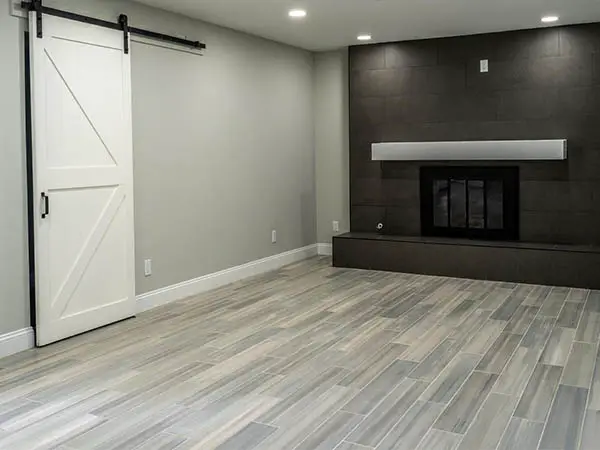
Neutral gray tones have dominated interior design for years, but this once-popular color is now losing its charm. While gray is versatile and sophisticated, an overuse of it can make a home feel cold and impersonal. Homeowners are increasingly gravitating toward warmer tones, such as beige, taupe, and earthy neutrals, which create a more inviting and comfortable atmosphere. Additionally, gray flooring—especially light gray wood-look laminate—has become overly common, making it feel generic rather than stylish.
Design experts predict a return to warmer, richer color palettes that add depth and personality to living spaces. Soft creams, warm whites, and even muted pastels are replacing cool grays on walls, while natural wood tones are making a comeback in flooring choices. Statement colors like deep greens, burnt oranges, and moody blues are also gaining traction as homeowners move away from neutral-heavy interiors. If you want your home to stay on-trend, incorporating warmer hues will help keep it feeling fresh and modern.
6. Shiplap Walls
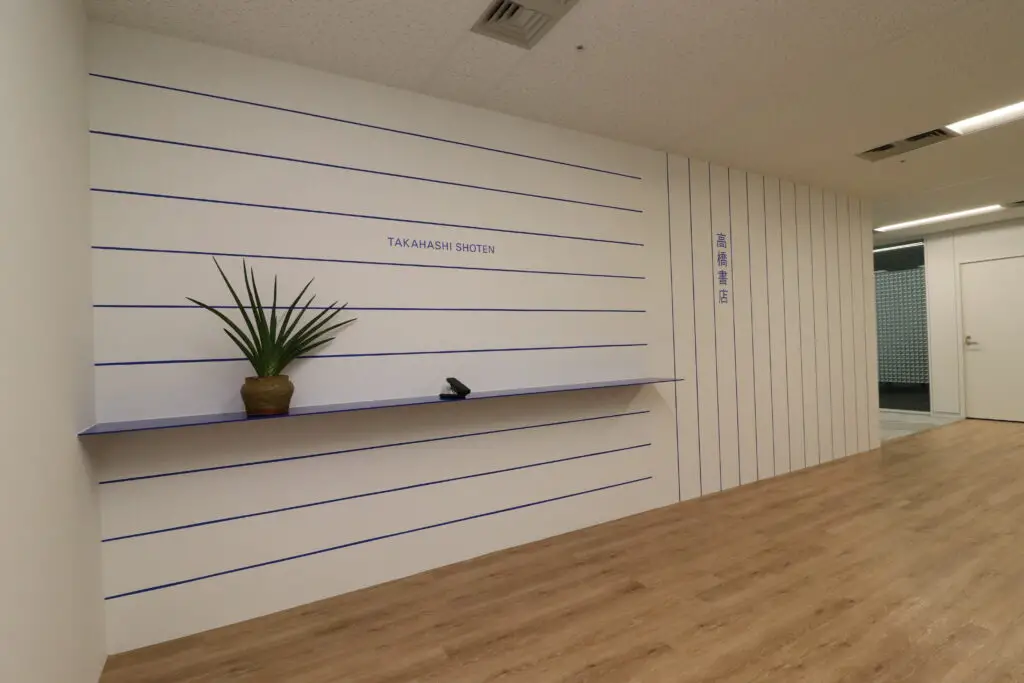
Shiplap exploded in popularity thanks to the farmhouse trend, but its days as a go-to wall treatment are numbered. While it adds texture and a rustic feel, it has been overused to the point of becoming cliché. Many homeowners are finding that shiplap can make a space feel too themed or outdated rather than timeless. Additionally, as interior design moves toward more modern and eclectic aesthetics, heavily rustic elements like shiplap no longer fit the evolving styles.
Instead, homeowners are opting for more refined wall treatments such as plaster, Venetian finishes, or sleek wood paneling. Wallpaper, especially in bold patterns and textures, is also making a strong comeback as an alternative to shiplap. Minimalist, high-end finishes that add dimension without looking overly themed will define the next wave of interior design. If you still love the textured look, consider vertical paneling or subtle wainscoting for a more sophisticated update.
7. Industrial-Style Lighting
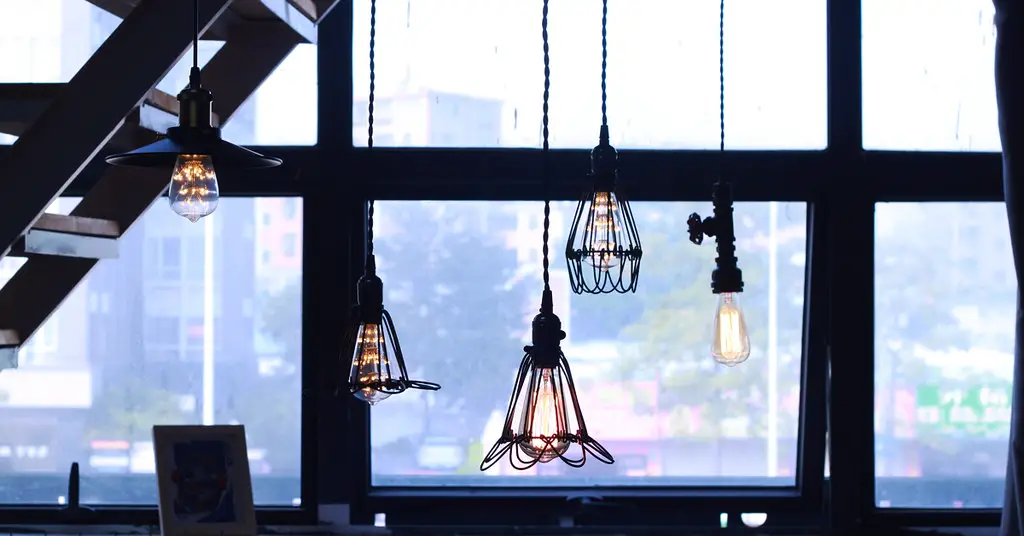
Exposed Edison bulbs and black metal fixtures became popular during the rise of industrial-inspired interiors, but this look is beginning to feel overdone. While these elements work in loft-style spaces, they can feel too harsh and utilitarian in many homes. Homeowners are now gravitating toward softer, more elegant lighting styles, such as sculptural chandeliers, globe pendants, and mixed-material fixtures. Warm, ambient lighting is replacing stark, exposed bulbs, making spaces feel cozier and more inviting.
Matte black and distressed metal finishes are also giving way to mixed metals, brass, and organic materials like rattan and glass. Layered lighting, which combines overhead fixtures, sconces, and table lamps, is becoming the new standard for a well-designed space. If you’re looking to update your home, swapping out industrial-style lighting for more sophisticated fixtures will instantly modernize your space.
8. Granite Countertops
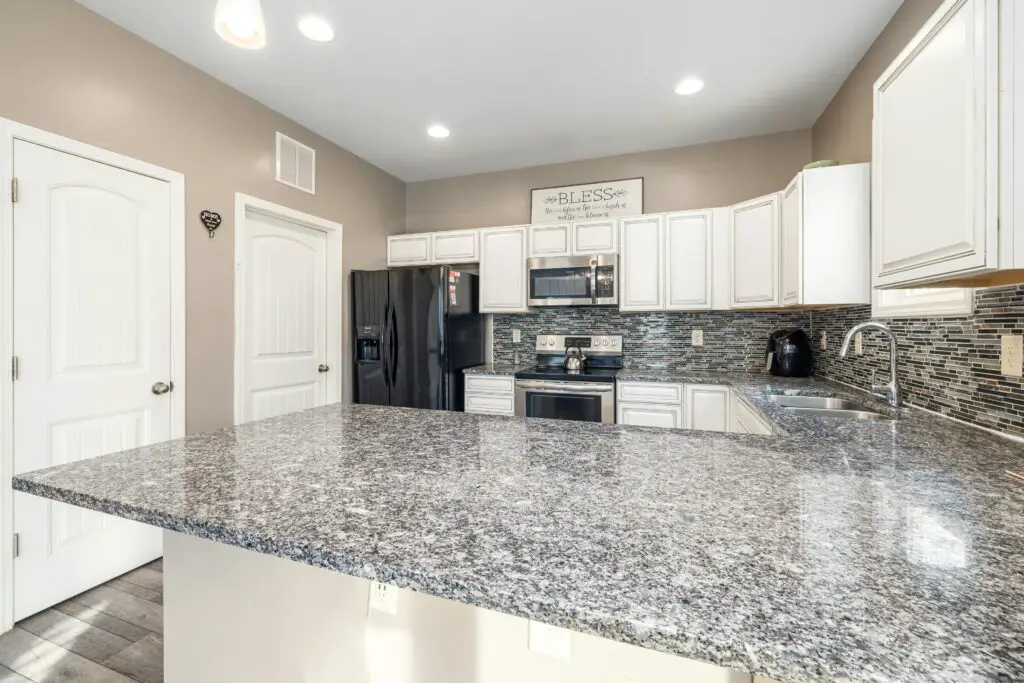
For years, granite was the go-to material for kitchen and bathroom countertops, but its popularity is steadily declining. While it remains durable, its speckled appearance and high maintenance requirements are turning homeowners toward more modern alternatives. Materials like quartz, marble, and concrete offer a sleeker, more uniform look with less upkeep. Additionally, as design trends shift toward warmer, organic aesthetics, the cool tones of granite no longer complement the latest interior styles.
Quartz, in particular, has taken over as the preferred choice due to its non-porous nature and resistance to stains and bacteria. Butcher block and composite materials are also gaining traction for their warmth and sustainability. Homeowners are now prioritizing countertops that provide both style and function with minimal maintenance. In five years, granite countertops will feel outdated, replaced by more contemporary and practical materials.
9. Subway Tile Backsplashes
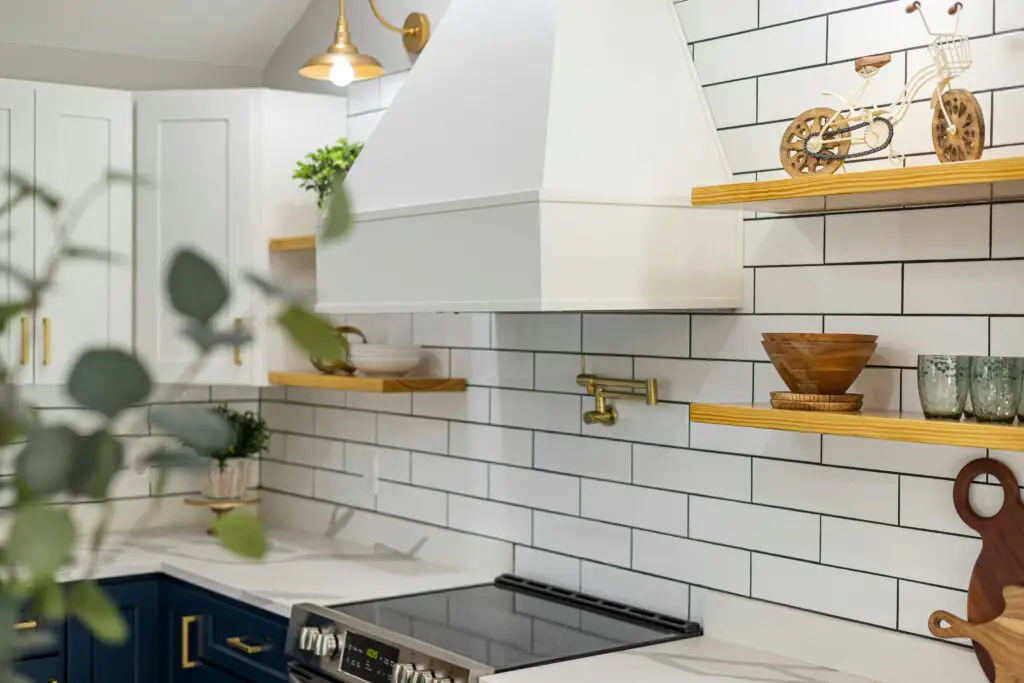
Classic white subway tile backsplashes have been a kitchen staple for decades, but their overwhelming popularity has led to design fatigue. While they offer a clean and simple look, they are now seen as a safe, uninspired choice that lacks uniqueness. As homeowners seek to add more personality to their kitchens, bold and textured backsplashes are becoming the new standard. Hand-painted tiles, zellige tiles, and natural stone slabs are being used to create more visually interesting focal points.
The rise of large-format backsplashes that extend seamlessly from countertops is also making traditional subway tiles look dated. Instead of simple white rectangles, homeowners are embracing colorful patterns, organic textures, and statement materials. While subway tiles won’t disappear completely, their widespread use means they will no longer be a cutting-edge design choice. Those looking to keep their kitchens modern should explore more dynamic and unique backsplash options.
10. Fast Furniture
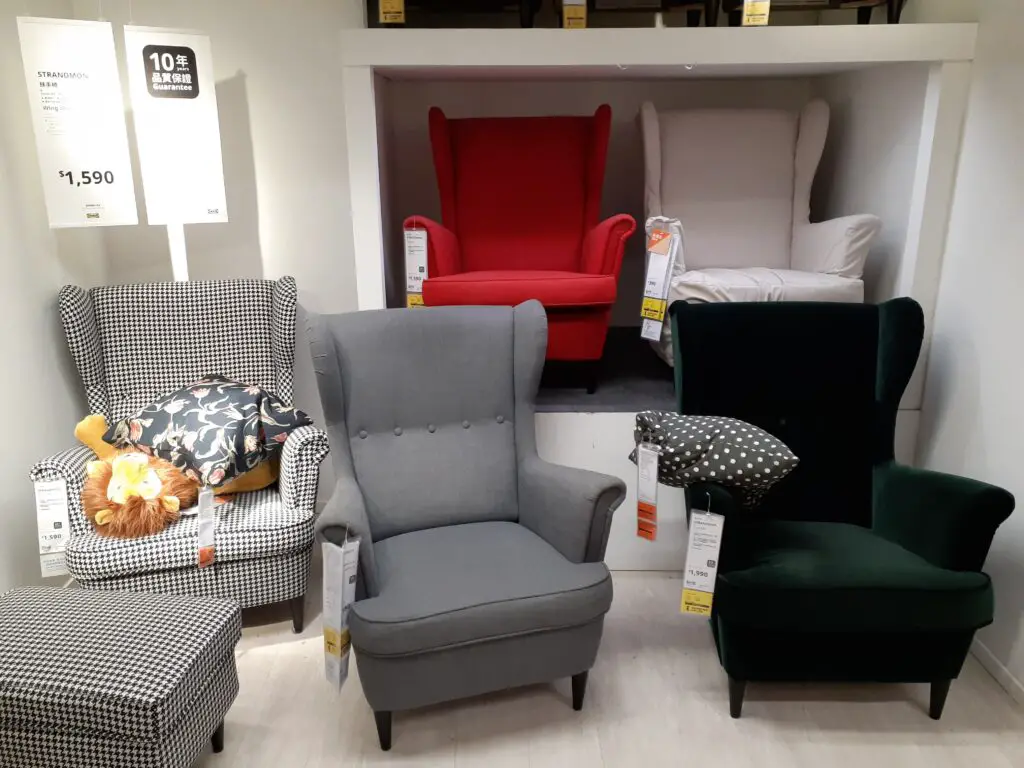
Mass-produced, low-cost furniture from big-box stores has been a convenient option for many homeowners, but its appeal is quickly fading. As sustainability becomes a top priority, people are moving away from cheaply made furniture that wears out quickly and contributes to landfill waste. Instead, there is a growing preference for high-quality, timeless pieces that last longer and align with eco-conscious values. Second-hand, vintage, and artisan-made furniture are becoming more desirable as homeowners seek uniqueness and durability.
Additionally, fast furniture often lacks the craftsmanship and character of solid wood or custom-made pieces. Many consumers are now investing in furniture that is built to last rather than replacing low-quality items every few years. This shift means that cheaply made, mass-market furniture will feel outdated as people prioritize sustainability and longevity. In the next five years, quality over quantity will define home design choices.
11. Accent Walls in Bold Paint Colors
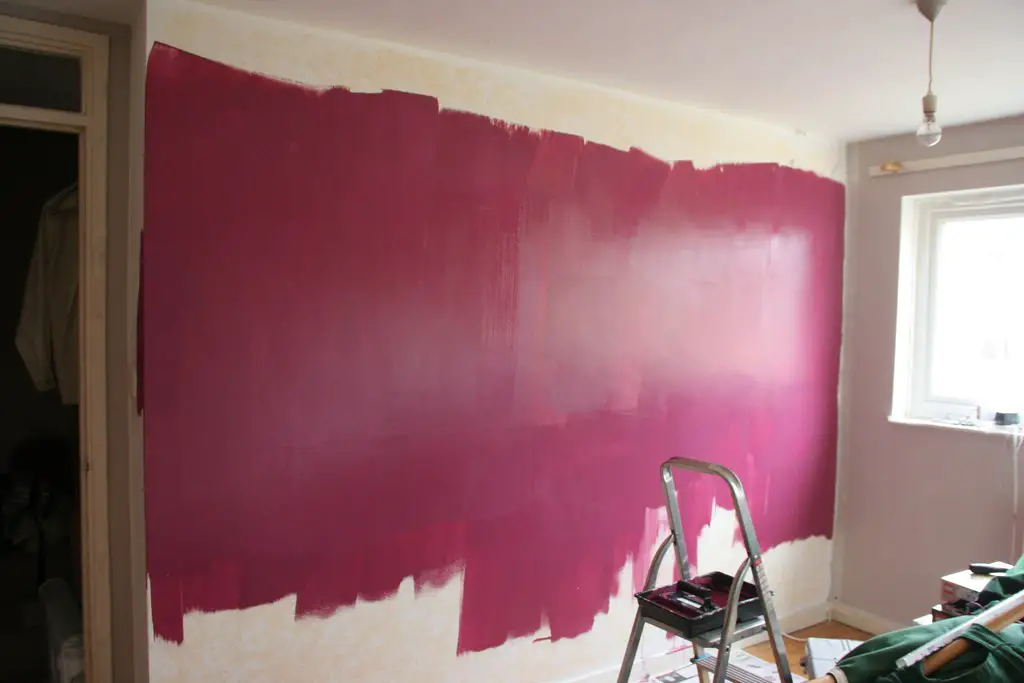
Once a go-to way to add drama to a room, bold accent walls in single paint colors are starting to feel outdated. Deep navy, dark green, or bright red feature walls were once trendy, but they now appear one-dimensional and overly trendy. Instead, homeowners are opting for more subtle ways to add depth, such as textured walls, wallpaper, and custom millwork. Painted accent walls often lack the sophisticated look of more integrated design elements, making them a less popular choice.
Designers are shifting toward full-room color applications rather than isolated feature walls. Instead of painting one wall in a bold shade, entire rooms are being enveloped in moody, warm, or neutral hues for a cohesive look. Wainscoting, limewash finishes, and large-scale murals are also replacing simple painted accents. While color isn’t going anywhere, the single bold accent wall trend is fading in favor of more immersive design techniques.
12. Heavy Window Treatments
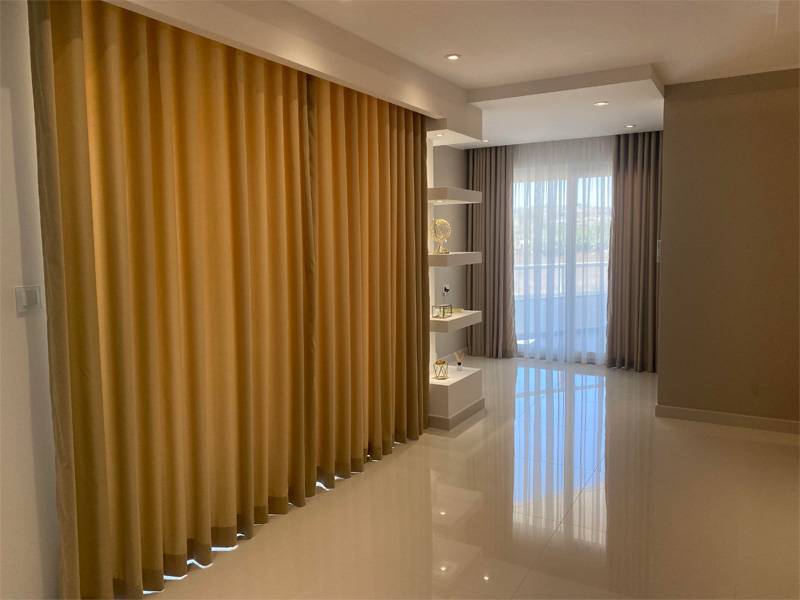
Thick drapes and overly elaborate window treatments were once a sign of luxury, but they are quickly falling out of favor. Heavy curtains, valances, and layered window coverings can make a space feel dark, dated, and overly formal. Many homeowners are now embracing a more minimalist approach to window treatments, favoring sheer curtains, roller shades, or sleek blinds. These alternatives allow for better natural light flow and a more modern aesthetic.
The shift toward open, airy interiors means that bulky drapes are being replaced by lightweight fabrics and motorized smart shades. Natural materials such as linen and bamboo are also becoming popular for a softer, more organic feel. As home design trends continue to prioritize simplicity and functionality, heavy window treatments will feel increasingly outdated. Those looking to modernize their homes should opt for streamlined, low-maintenance window coverings that enhance natural light rather than obscure it.
13. Tuscan-Style Kitchens
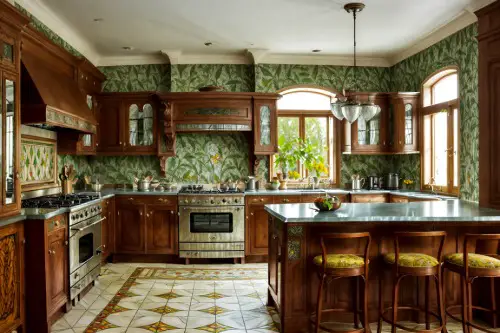
Once a hallmark of upscale homes in the early 2000s, Tuscan-inspired kitchens filled with dark wood cabinetry, ornate iron accents, and earthy tones now feel heavy and outdated. These kitchens often featured faux finishes, tumbled stone backsplashes, and granite countertops in gold and brown hues. While they aimed to bring Old World charm, their overly decorative nature no longer aligns with current trends focused on simplicity and clean lines. Today’s homeowners are trading in bulky fixtures and ornate carvings for lighter palettes and minimalist finishes.
Modern kitchens now favor natural wood tones, soft textures, and integrated appliances that offer a streamlined look. Open shelving, mixed materials, and cleaner hardware styles reflect a more updated and versatile approach. As preferences shift toward lighter and more functional kitchens, the overly themed Tuscan aesthetic feels stuck in a bygone era. If your kitchen still has faux brick arches or oil-rubbed bronze hardware, it may be time for a refresh.
14. Niche Cutouts in Walls
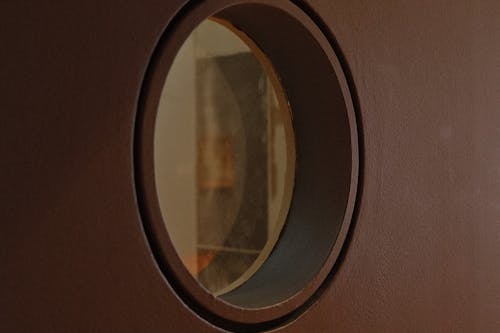
Architectural wall niches were once considered a stylish way to display art, vases, or accent lighting, especially in entryways and hallways. However, they now often read as a builder-grade attempt at luxury that no longer fits with today’s streamlined interiors. These recessed cutouts can interrupt wall flow and limit furniture or art placement. Instead of feeling intentional, they can make walls look cluttered or unfinished.
Designers now recommend smooth, uninterrupted walls that offer flexibility and a cleaner aesthetic. Large-scale art pieces, gallery walls, or even minimalist paneling achieve a more modern and customizable look. If you’re stuck with a niche, consider drywalling over it or turning it into a flush cabinet for hidden storage. Removing these outdated features is an easy way to make a home feel newer and more relevant.
15. Faux Finishes and Sponge Painting
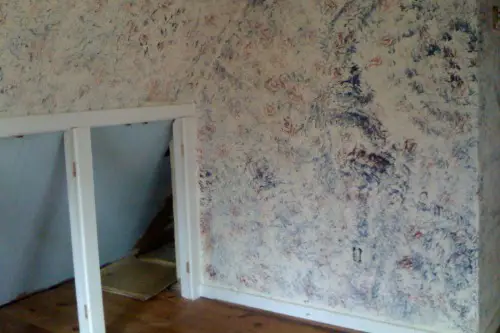
In the ’90s and early 2000s, faux painting techniques like sponge, rag-rolling, and marbling were all the rage for adding “texture” and drama to walls. Unfortunately, these looks haven’t aged well and often make newer homes feel much older than they are. These finishes tend to appear overly busy and can clash with modern decor, especially when applied in bold or dated color schemes. What once seemed creative now feels like a DIY trend that went too far.
Current paint trends emphasize smooth, matte finishes in natural or neutral tones that serve as calming backdrops. Accent textures are added with real materials like limewash, plaster, or wallpaper rather than paint illusions. If your walls are still showing signs of sponge art, it’s worth giving them a fresh coat in a modern tone. You’ll instantly make the space feel cleaner and more up-to-date.
16. Overly Matching Furniture Sets
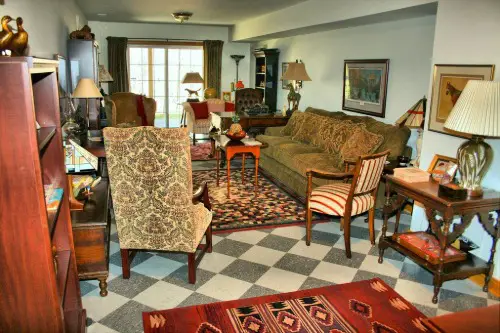
Buying a full bedroom or living room set used to be the standard—matching headboard, nightstands, dresser, and mirror all from the same collection. But now, this “matchy-matchy” look screams showroom and lacks the layered, personalized style that modern homes aim for. Identical wood tones and hardware make spaces feel rigid and predictable. Even in new homes, it creates an instant time stamp.
Today’s design sensibility embraces contrast, texture, and collected-over-time appeal. Mixing finishes, materials, and styles creates a more inviting, lived-in feel. A curated combination of vintage and modern pieces shows intention and taste. To avoid an outdated look, mix it up—ditch the full set and let each piece speak for itself.
17. Builder-Grade Bathroom Fixtures
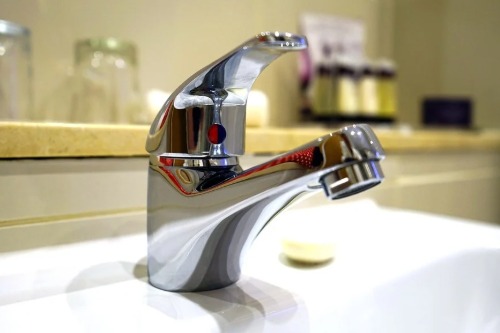
Even in brand-new homes, generic chrome faucets, basic light bars, and plastic towel holders can cheapen the look of a bathroom. These mass-produced fixtures are cost-effective for builders but lack character and sophistication. Their utilitarian appearance makes the space feel uninspired and forgettable. When everything is standard issue, nothing stands out.
Upgrading to statement faucets, brass or matte black hardware, and stylish lighting can completely transform a bathroom’s feel. Designers recommend mixing metals or incorporating artisan fixtures to add visual interest. Swapping builder-grade basics for upgraded elements doesn’t require a full renovation—it just needs thoughtful detail work. These small touches add polish and personality that keep the space feeling current.
18. Popcorn Ceilings
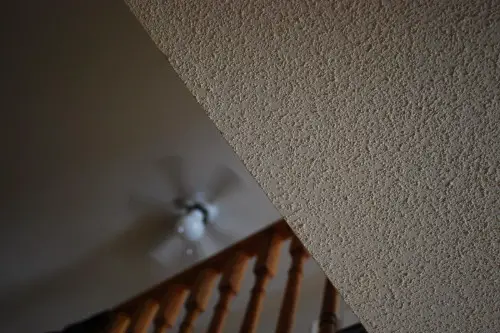
Popcorn ceilings were once a standard feature in homes built from the 1950s through the 1980s for their sound-dampening qualities and ease of application. But in modern design, they’re widely regarded as an eyesore—even in newly built homes that try to emulate vintage aesthetics. Their bumpy texture collects dust, casts uneven shadows, and instantly dates a space. In newer homes, it can feel like a shortcut or oversight.
Smooth, flat ceilings are now the gold standard for a clean and contemporary look. Coffered ceilings, subtle beams, or even painted accents can add texture without resorting to the dreaded popcorn finish. Removing a popcorn ceiling is a labor-intensive job but pays off in visual appeal and resale value. It’s a clear signal that your home has been thoughtfully updated.
19. Niches Above Kitchen Cabinets
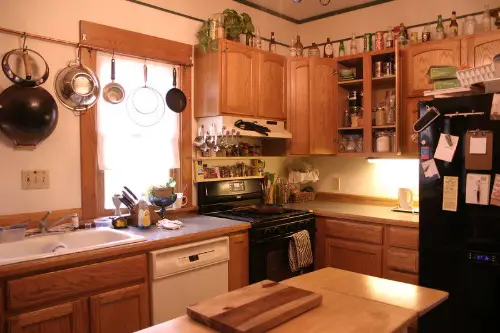
That awkward space between the top of kitchen cabinets and the ceiling was once used for faux plants, decorative plates, and rooster statues. But now, this kind of décor setup is seen as cluttered and outdated. Dust-prone and hard to access, these upper niches rarely add real value to kitchen design. Even when left empty, the space itself looks like a design flaw.
Today’s kitchens are opting for full-height cabinetry that extends to the ceiling, maximizing storage and minimizing visual noise. If upper cabinets aren’t an option, a clean crown molding finish gives the space a polished look. Removing upper-kitchen clutter helps the room feel more modern and streamlined. Less is definitely more when it comes to above-cabinet decor.
20. Ornate Ironwork
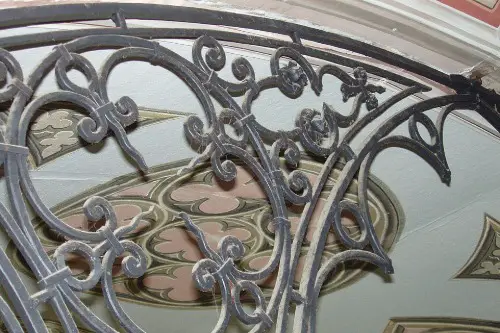
Scroll-heavy iron banisters, room dividers, and decorative window grills were once thought to add elegance and Old World flair. But today, these flourishes tend to look overly formal and dated, especially in homes aiming for a modern or transitional feel. The heavy, dark metalwork often clashes with lighter interior trends and open design sensibilities. Rather than adding luxury, it can make a space feel stuffy or themed.
Sleek, minimalist railing systems in black, glass, or natural wood have taken their place in newer homes. Clean lines and simpler profiles now dominate staircases, entryways, and balconies. If your home still features heavy ironwork, replacing or repainting it can dramatically shift the overall tone. The move toward understated elegance means less ornamentation and more thoughtful design.
21. Corner Fireplaces
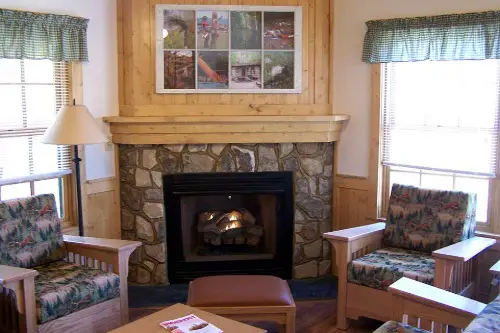
Corner fireplaces were a common feature in suburban homes from the 1980s to the early 2000s, intended to save space or work within odd room layouts. But rather than acting as a focal point, these off-angle installations often throw off furniture placement and design flow. In newer homes, they can make living spaces feel awkward or cramped. Their location rarely complements a TV wall or creates the cozy ambiance expected from a fireplace.
Central, linear fireplaces with clean designs have become the new standard, especially in open living areas. Homeowners prefer symmetrical layouts that align with focal points and support balanced furniture arrangements. Electric and gas inserts with sleek finishes offer a more integrated look. Corner fireplaces, though functional, are quickly being phased out in favor of more purposeful design choices.
22. Overly Themed Rooms
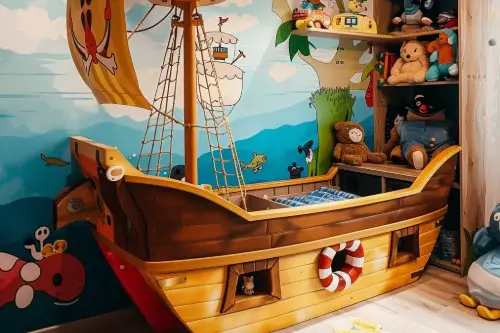
Whether it’s a nautical bathroom, Parisian guest room, or a jungle-themed nursery, heavily themed spaces now read as kitschy rather than charming. These rooms often rely on novelty décor and obvious color schemes, which can feel juvenile or forced—even in newly built homes. They tend to age quickly and lack the adaptability that modern interiors demand. What once felt playful now feels overly contrived.
Today’s design favors mood over motif—spaces that evoke a feeling rather than hit you over the head with a concept. A coastal-inspired room, for instance, might use soft blues, natural textures, and light woods without a single anchor in sight. Creating a timeless room means focusing on materials, tone, and function rather than overt symbolism. Subtlety, not theme, keeps interiors feeling fresh.
23. Half-Walls and Pony Walls
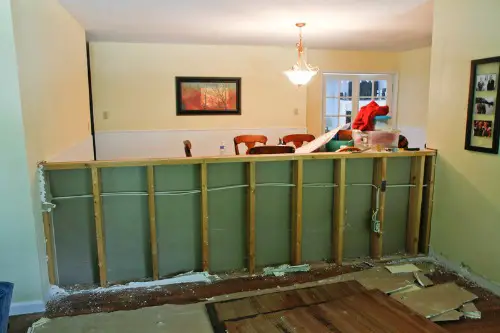
Half-walls, often used to define space in open layouts without fully enclosing them, were common in homes from the late ’90s to early 2010s. But they now disrupt flow more than they enhance it, acting as unnecessary visual blocks in otherwise clean designs. In new builds, they can come off as indecisive architecture—neither fully open nor effectively divided. Their presence often complicates furniture placement and sightlines.
Homeowners today prefer either fully open layouts or smart partitions like glass walls, shelving units, or sliding doors that offer better flexibility. Removing pony walls is a popular renovation move to open up smaller spaces and create a more seamless transition between rooms. As design trends lean toward clarity and cohesion, half-walls feel like an outdated compromise. A clear boundary or a truly open space is almost always better.
24. Faux Wood Paneling

Thin, laminate wood paneling was once considered a shortcut to warmth and texture, especially in dens and basements. But today, these fake finishes feel cheap and outdated, even in newly constructed spaces that try to emulate retro vibes. Faux paneling lacks the depth, grain, and authenticity of real wood, making rooms feel like relics from the ’70s. Worse, the shiny surface reflects light in unnatural ways that clash with modern lighting schemes.
Designers are instead embracing real wood accents or textured wallpapers for depth and warmth. If wood is your preference, go for tongue-and-groove planks, reclaimed materials, or even vertical slat walls for a contemporary twist. Faux options rarely age well, and nothing beats the tactile richness of the real thing. Removing fake wood paneling is a surefire way to make your home feel 20 years younger.
